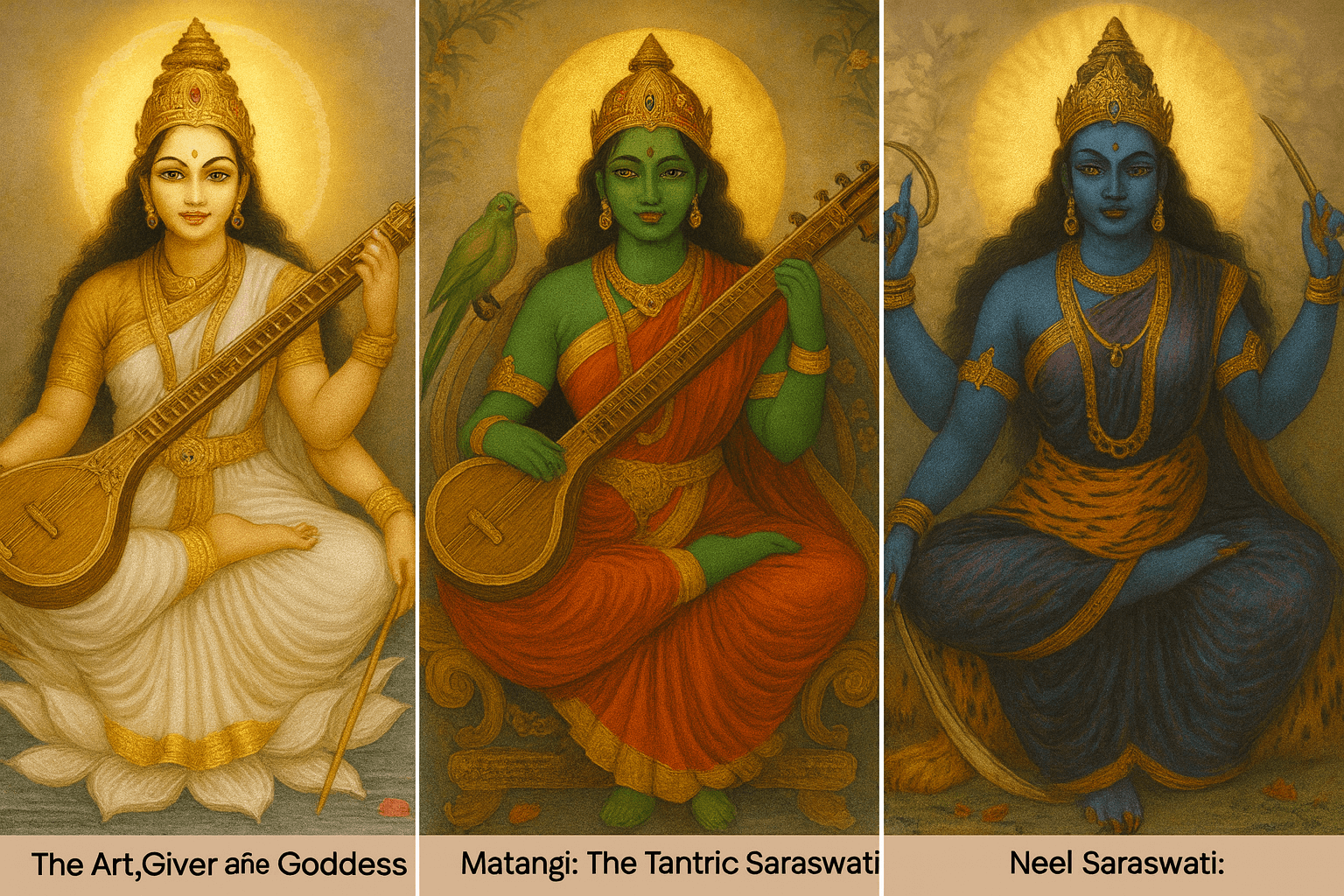
Saraswati, Matangi, and Neel Saraswati: Untangling the Wisdom Goddesses
When we think of Saraswati, most of us picture the serene Hindu goddess seated on a lotus, veena in hand, blessing students, artists, and seekers of knowledge. She is celebrated as the guardian of wisdom, learning, and creativity. But her story is far more layered than the image on a festival poster.
Saraswati: The Vedic River and Goddess of Purity
The name Saraswati is not only divine—it is also geographical. In the Rig Veda, Saraswati is described as the “best of rivers”. Like the Ganga, Saraswati began as a river, revered as a mother and life-giving force. Over time, the symbolism expanded: just as water purifies the body, knowledge purifies the mind and spirit.
Thus Saraswati became the personification of purity—both intellectual and spiritual. She is the shakti (energy) of Brahma the Creator, inspiring excellence in academia, literature, music, and art.
Matangi: The Tantric Saraswati
While Vedic Saraswati represents refined knowledge, Matangi takes us into the tantric dimension. Known as the ninth of the Dasa Mahavidyas, Matangi is called the “Tantric Saraswati.” She dwells in the throat chakra, governing speech, thought, and creativity.
Her emerald complexion ties her to deep natural wisdom, and her companion—the parrot—symbolizes speech and communication. Unlike the pristine image of Saraswati in white, Matangi accepts only leftover food from her devotees, earning the title Ucchista Chandali. This practice breaks social conditioning, reminding seekers that wisdom is not bound by purity taboos.
Neel Saraswati: Tara, the Blue Goddess of Liberation
The third figure often woven into the discussion is Neel Saraswati, who is in fact another name for Tara, the second of the Mahavidyas. While Saraswati is white and pure, and Matangi is green and earthy, Tara is deep blue (neela).
Tara embodies fierce compassion and liberating wisdom. Her name comes from the Sanskrit root tar, meaning “to cross” or “to liberate.” In Tantric and Buddhist traditions, Tara rescues devotees from fear, ignorance, and bondage, guiding them toward moksha (liberation).
Her energy offers both bhoga (worldly fulfillment) and moksha (spiritual release), depending on the seeker’s intention. Devotees believe she bestows poetic skill, courage, and vaak siddhi—the perfection of speech.
Key Distinctions
- Vedic Saraswati: Purity, intellectual clarity, and refined knowledge.
- Matangi: Tantric wisdom, communication, creativity, and breaking social norms.
- Neel Saraswati (Tara): Liberation, courage, and the power to transcend suffering.
Together, these three aspects reveal how the feminine principle of wisdom in Hindu and Tantric thought evolves—from river and purity, to speech and creativity, to liberation itself.
Closing Reflection
Texts like the Brihat Nila Tantra emphasize that Neel Saraswati is not for the faint-hearted—her worship often takes place in unusual or taboo spaces like cremation grounds or forests, pushing seekers to confront their fears.
What this reminds us is that knowledge, in all its forms, is not only about memorizing facts or composing poetry. It is about purification, breaking illusions, and ultimately finding the courage to face liberation.
